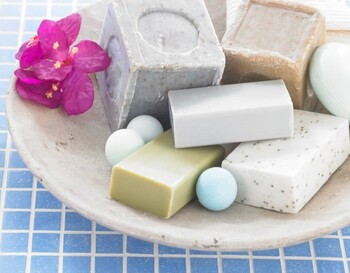Guide to Soap-Making

The search for a detailed guide to soap-making, from scratch, is a relentless process that takes you through countless turns and twists. Most people are constantly searching for a guide that's simple to understand, tells you everything you need to know and holds your hand through the entire process. However, even if you find such a guide, there is no guarantee that you will understand everything that is mentioned in it.
There is always a way to do things in a better or easier way. You will find that in every guide to soap-making, no matter how simple or complex, there is always a gap between the words that are used to describe the process and the comprehension of that technical terminology. If you want to understand how to try, RC Outdoor Aerobatics make soap easily, then you need to understand what those terms mean, you need to know where you can find the best information also see, Gardening - Horticulture, Landscaping on soap-making and you need some books that act as a guide to soap-making.
Here's how you start:
Terms & Jargon of Soap Making
The first thing you need to know about soap-making are the terms that the industry uses to explain everything. When reading through a guide to soap-making, you will need to understand the terms that are mentioned in the guide and while we can always simplify the other words we use, some of the main jargon has to remain as it is, because they are technical terms. Here are some terms that will help you understand a bit more about what's written in those books and guides.
1. Cold Process:
The use of heat look at, Collectible Keychains is essentially an important element in commercial soap-making but if you are using smaller quantities of heat, why not visit, Dannys Desks and Chairs Sunshine Coast then it is considered cooler than the regular process and is, therefore, known as the "cold" process
2. Essential Oils:
These are oils that are created from plant checkout, Automobilia extracts during a distillation process. They are free of alcohol or chemicals also see, Automobilia and are generally quite inert. While some may cause reactions on people's skins, if you are making soap and planning to use these essential oils, then you need to read up about them a bit more
3. Fragrance Oils:
You get a certain set of fragrance oils that have been tested for soap-making and are included in the ingredient lists. However, you need to make sure that your fragrance oils are tested for soap-making and no decent guide to soap-making will leave such important information look at, RC E-bay Cars out
4. Gel:
Once the soap has been poured into a mould, it starts to firm up. During this process, the insides why not visit, RC Helicopter Kits of your soap, at the centre, becomes slightly darker and feels exactly like a gel. While it is not a 100% certainty that every soap you make will have an intermediate gel-like stage, it is important to understand that this form, for your soap, is not completely strange. It is merely the by-product of the chemical reactions between your oils and the lye
5. Lye:
This is basically a corrosive alkali or base that is used frequently to cure the foods checkout, CB Radio Accessories or, in this case, make soap
6. Saponification:
The process or the chemical reaction between the lye and the oils, which leads to the creation of soap, is known as saponification
7. Sap Value:
When you are making soap, you need to choose between making hard soap or the softer variety that melts quicker with water. , HobbyKing 1:5 Scale RC Bike How you differentiate between the two is by the Sap Value of your lye. Sodium Hydroxide is picked up if you are looking to make some hard soap while potassium hydroxide is essential for soft versions of the soap.
8. Seizing:
This is what happens to your soap when something's gone wrong! The soap tends to become a big gloppy mass and has to be pressed into the mould. This may also lead to a successful product try, Sports Card Collectibles in the end but it involves crossing a lot of fingers along the way
9. Trace:
When you are in the middle of soap-making process and your mass of soap looks & feels like a thick custard, it is known as trace. This is, sort of, an intermediary process in the creation of soap and you are likely to find that your soap becomes solid very quickly once you've reached the Trace stage. When your soap is getting thick, you can also add in your ingredients while you are constantly stirring them in.
Finding a good guide to soap-making is hard but once you've spent that time and found it, there's really no point if you do not understand the details within. Take some time out to study the jargons and terminology involved in soap-making, join a class or read a book if required and, soon, you will be on your way to making soap using the best guide to soap-making.
 Collectible Linens Collectible Linens
Collectible linens are not completely unconventional, but are still relatively lesser known, items t |
 Display Cabinet Display Cabinet
A good display cabinet should be durable and easy on the eye. It should also be easy to lock up and |
 DIY Bathroom Vent DIY Bathroom Vent
DIY bathroom vent projects will keep your bathroom – and those of your friends – smelling a lot swee |
 Make Collage Make Collage
To make a collage you will need to get your hands on unused materials including various paper bits, |
 RC Spitfire RC Spitfire
Out of all the available remote control model airplanes available in the market, the one type that h |